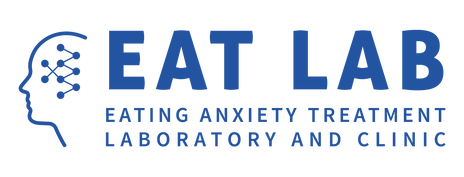|
Developing a Measure of Non-Binary Gender (Genderqueer) Assessment
by: Lisa Michelson, B.A. Classifications of gender identity, gender expression, and biological sex have become prevalent topics within contemporary healthcare conversations. These topics were once understood as a binary of options (i.e. male/female, masculine/feminine), but now these topics are viewed as a part of a spectrum (i.e. an individual can vary in how much they identify as “male” and “female”/”masculine” and “feminine”). However, the healthcare system has not yet been able to adapt its treatment plans, insurance plans, and other types of documentation within healthcare to this new ideology of gender and sex. This causes individuals who do not associate or perform as the stereotypical “male” or “female” (at the very least) to be misunderstood, and (at most) to receive inadequate healthcare. Before we move on, let’s define some terms. Performing gender is “performing” one’s gender in alignment with societal expectations of that gender (i.e. a woman would be performing gender if she were to wear a dress). Non-performing gender is deviating from what culture depicts as an individual’s “authentic self,” or the individual’s identity that society is most comfortable with. Examples of non-performing gender are cross-dressing or identifying as transgendered. Heteronormativitiy are policies, beliefs, norms, and disciplinary mechanisms that reinforce the sex/gender system; for example, heteronormative culture endorses “female” and “male” sex designations on birth certificates. Cisnormativity is the expectation that all people are cissexual, that those assigned male at birth always grow up to be men and those assigned female at birth always grow up to be women. Not performing gender (i.e. cross-dressing or being transgendered) can cause a variety of negative outcomes, such as bullying and teasing, to be elicited. It is this performativity of being a “man” and being a “woman,” that has affected how individuals are treated within the healthcare system. There are issues if an individual does not perform his/her/their gender identity. For example, Trans* individuals are poorly understood and medicated by healthcare professionals, who mostly lack training in Trans* healthcare. Because physicians are not trained in the treatment of Trans* individuals and because important healthcare documents force individuals to designate their sex as “male” or “female,” Trans* individuals experience systematic violence by the healthcare system; for example, they do not have the option of identifying as two genders on medical documents, if they feel their identity is a blend of male and female. If one does not follow the gender binary system, then one’s identity undergoes erasure and is not viewed as legitimate. There are serious ethical issues with forcing Trans*, inter-sexed, or non-binary individuals to associate with one of two genders if they view their identity as either a mixture of male and female, or one outside of the binary scale. Because there are currently no assessments that attempt to understand gender separate from performativity, I, along with the EAT lab, have developed the Non-Binary Gender Assessment (NBGA). This assessment asks individuals questions about how they view themselves rather than through performativity questions. Traditional performativity questions assess items such as “I like guns.” In scoring, this individual would be described as “masculine.” However, this is based off of stereotypical analysis of gender performativity within a heteronromative, cisnormative culture. In other words, it is unfair to attach masculinity to the “I like guns” statement. In fact, a female who considers herself feminine may like guns as well. Instead, we are trying to develop a measure that does not rely on these stereotypes. In the Non-binary Gender Assessment (NBGA) individuals are asked questions regarding how they view their identity. For example, individuals have the opportunity to quantify their gender identity on a scale from 1 to 10 in three categories “Female,” “Male,” and “Other.” Allowing individuals to quantify their own gender rather than assigning them a gender based off performativity aids in the individual’s agency, which is defined as one’s ability to make an autonomous decision for himself/herself. Through this 62-item survey, individuals answer a series of questions regarding ones’ gender identity, gender expression, and biological sex; for example “I am afraid to not wear clothes in public because people will look at my body (i.e. at a swimming pool or sauna).” The individual is not marginalized by a series of “yes” or “no” questions, but rather have the opportunity to scale one’s answer and provide clarification for answers if desired. The hope in creating this scale is to better understand an individual’s gender and sex identity. Additionally, the goal is to see if the NBGA illuminates any relationships between both gender and sex identity and eating disorders. Previous research suggests that there is a higher prevalence of eating disorders in non-binary populations when compared to the same demographic in binary populations (Feldman & Meyer, 2007; McClain & Peebles, 2016). If the NBGA is able to detect the parts of an individual’s gender and sex identity that can cause an increase prevalence in eating disorder symptoms, then this may help in better understanding why non-binary individuals engage in disordered eating behaviors in the first place. Stay tuned as the EAT lab continues to develop and validate this measure!
0 Comments
Leave a Reply. |
Archives
January 2024
Categories |
- About
- People
- Our Research & Publications
-
Participate in Research
- Personalized Interventions and Outcomes: Navigating Eating Disorder Experiences and Recovery (PIONEER) Study (Online)
- Youth Eating Study (YES!)
- Tracking Restriction, Affect and Cognitions (TRAC) Study (Online)
- Virtual Reality Study
- Facing Eating Disorder Fears Study (Online)
- Personalized Treatment and CBT-E Study (Online)
- Body Project Summer Camp
- The Body Project
- Clinical Screener Study (Online)
- Clinic, Supervision, and Consultation
- Blog & In the Press
-
Archived Studies
- Predicting Recovery Study (Online)
- Online Single Session Resources
- Reconnecting to Internal Sensations and Experiences (RISE) Study
- Web-Based Mindfulness Study
- Personalized Treatment Study
- Online Imaginal Exposure Study
- In-Vivo Imaginal Exposure Study
- Daily Habits 3 Study
- Daily Mood Study
- COVID-19 Daily Impact Study
- Conquering fear foods study
- Louisville Pregnancy Study
- Approach and Avoidance in AN (AAA) Study
- Web-Based Mindfulness for AN & BN Study
- Barriers to Treatment Access (BTA) Study!
- Mindful Self-Compassion Study
- Network EMA Study
- Legacy of Hope Summit Report
- DONATE-CURE EATING DISORDERS!
- Directions
- Statistical Consultation
- About
- People
- Our Research & Publications
-
Participate in Research
- Personalized Interventions and Outcomes: Navigating Eating Disorder Experiences and Recovery (PIONEER) Study (Online)
- Youth Eating Study (YES!)
- Tracking Restriction, Affect and Cognitions (TRAC) Study (Online)
- Virtual Reality Study
- Facing Eating Disorder Fears Study (Online)
- Personalized Treatment and CBT-E Study (Online)
- Body Project Summer Camp
- The Body Project
- Clinical Screener Study (Online)
- Clinic, Supervision, and Consultation
- Blog & In the Press
-
Archived Studies
- Predicting Recovery Study (Online)
- Online Single Session Resources
- Reconnecting to Internal Sensations and Experiences (RISE) Study
- Web-Based Mindfulness Study
- Personalized Treatment Study
- Online Imaginal Exposure Study
- In-Vivo Imaginal Exposure Study
- Daily Habits 3 Study
- Daily Mood Study
- COVID-19 Daily Impact Study
- Conquering fear foods study
- Louisville Pregnancy Study
- Approach and Avoidance in AN (AAA) Study
- Web-Based Mindfulness for AN & BN Study
- Barriers to Treatment Access (BTA) Study!
- Mindful Self-Compassion Study
- Network EMA Study
- Legacy of Hope Summit Report
- DONATE-CURE EATING DISORDERS!
- Directions
- Statistical Consultation

 RSS Feed
RSS Feed
